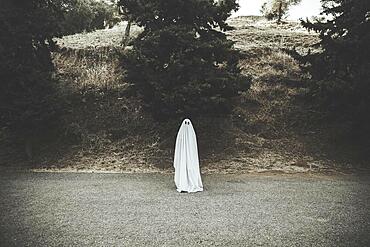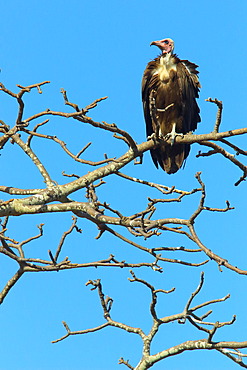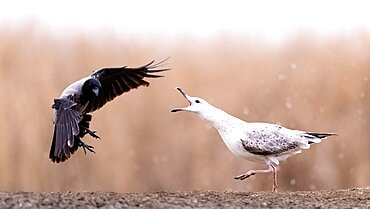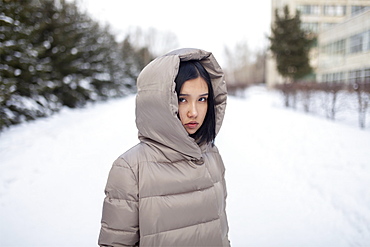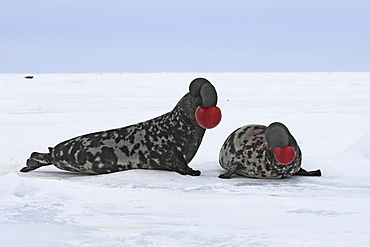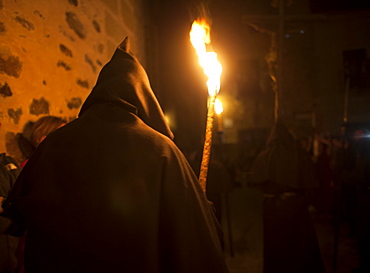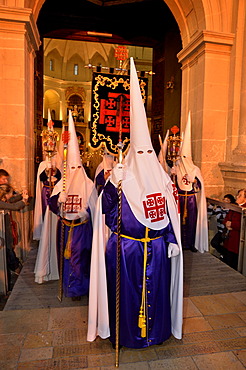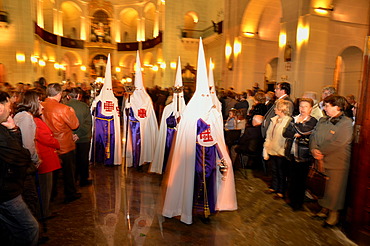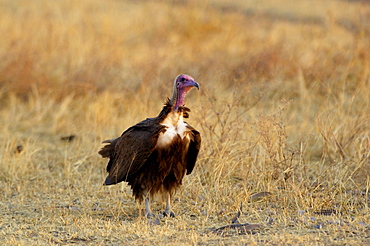Recent searches
Loading...
832-403104 - Ghost standing dark countryside road
1131-1928 - Brown-hooded kingfisher (Halcyon albiventris) on a branch, Kwazulu Natal Province, South Africa, Africa
860-291532 - Hooded Vulture (Necrosyrtes monachus) on a branch, Casamance, Senegal
1174-11453 - Close-up portrait of a Hooded Vulture, Necrosyrtes monachus, Londolozi Wildlife Reserve, Sabi Sands, South Africa
832-398194 - Golden-hooded tanager (Tangara larvata) on branch, Boca Tapada region, Costa Rica, Central America
860-291343 - Fight. Seagull (Larus sp) facing Hooded Crow (Corvus cornix). Slovakia
832-395366 - Old man with cane and hooded djellaba walks into shop, old man in beige hooded coat, Blue City, Chefchaouen, Tangier-Tetouan-Al Hoceima, Morocco, Africa
1350-2688 - Verges, a small town in the Northeast of Catalonia (Spain), during Easter celebrates the Procession of Verges with skeletons dancing on the sound of a drum, Roman soldiers, known as the 'Manages', and a representation of the life and crucifixion of Jesus Christ. The Procession features the Dance of Death, a tradition from the Middle Age associated with epidemics and plagues and the only one remaining in Spain Ten skeletons dance to the beat of a drum to remember that no one is exempt of death. The backdrop of the medieval walls and towers of Verges is key to this macabre staging.
1350-2693 - Verges, a small town in the Northeast of Catalonia (Spain), during Easter celebrates the Procession of Verges with skeletons dancing on the sound of a drum, Roman soldiers, known as the 'Manages', and a representation of the life and crucifixion of Jesus Christ. The Procession features the Dance of Death, a tradition from the Middle Age associated with epidemics and plagues and the only one remaining in Spain Ten skeletons dance to the beat of a drum to remember that no one is exempt of death. The backdrop of the medieval walls and towers of Verges is key to this macabre staging.
1350-2692 - Verges, a small town in the Northeast of Catalonia (Spain), during Easter celebrates the Procession of Verges with skeletons dancing on the sound of a drum, Roman soldiers, known as the 'Manages', and a representation of the life and crucifixion of Jesus Christ. The Procession features the Dance of Death, a tradition from the Middle Age associated with epidemics and plagues and the only one remaining in Spain Ten skeletons dance to the beat of a drum to remember that no one is exempt of death. The backdrop of the medieval walls and towers of Verges is key to this macabre staging.
1350-2695 - Verges, a small town in the Northeast of Catalonia (Spain), during Easter celebrates the Procession of Verges with skeletons dancing on the sound of a drum, Roman soldiers, known as the 'Manages', and a representation of the life and crucifixion of Jesus Christ. The Procession features the Dance of Death, a tradition from the Middle Age associated with epidemics and plagues and the only one remaining in Spain Ten skeletons dance to the beat of a drum to remember that no one is exempt of death. The backdrop of the medieval walls and towers of Verges is key to this macabre staging.
1350-2690 - Verges, a small town in the Northeast of Catalonia (Spain), during Easter celebrates the Procession of Verges with skeletons dancing on the sound of a drum, Roman soldiers, known as the 'Manages', and a representation of the life and crucifixion of Jesus Christ. The Procession features the Dance of Death, a tradition from the Middle Age associated with epidemics and plagues and the only one remaining in Spain Ten skeletons dance to the beat of a drum to remember that no one is exempt of death. The backdrop of the medieval walls and towers of Verges is key to this macabre staging.
1350-2691 - Verges, a small town in the Northeast of Catalonia (Spain), during Easter celebrates the Procession of Verges with skeletons dancing on the sound of a drum, Roman soldiers, known as the 'Manages', and a representation of the life and crucifixion of Jesus Christ. The Procession features the Dance of Death, a tradition from the Middle Age associated with epidemics and plagues and the only one remaining in Spain Ten skeletons dance to the beat of a drum to remember that no one is exempt of death. The backdrop of the medieval walls and towers of Verges is key to this macabre staging.
1350-2687 - Verges, a small town in the Northeast of Catalonia (Spain), during Easter celebrates the Procession of Verges with skeletons dancing on the sound of a drum, Roman soldiers, known as the 'Manages', and a representation of the life and crucifixion of Jesus Christ. The Procession features the Dance of Death, a tradition from the Middle Age associated with epidemics and plagues and the only one remaining in Spain Ten skeletons dance to the beat of a drum to remember that no one is exempt of death. The backdrop of the medieval walls and towers of Verges is key to this macabre staging.
1350-2689 - Verges, a small town in the Northeast of Catalonia (Spain), during Easter celebrates the Procession of Verges with skeletons dancing on the sound of a drum, Roman soldiers, known as the 'Manages', and a representation of the life and crucifixion of Jesus Christ. The Procession features the Dance of Death, a tradition from the Middle Age associated with epidemics and plagues and the only one remaining in Spain Ten skeletons dance to the beat of a drum to remember that no one is exempt of death. The backdrop of the medieval walls and towers of Verges is key to this macabre staging.
1350-2696 - Verges, a small town in the Northeast of Catalonia (Spain), during Easter celebrates the Procession of Verges with skeletons dancing on the sound of a drum, Roman soldiers, known as the 'Manages', and a representation of the life and crucifixion of Jesus Christ. The Procession features the Dance of Death, a tradition from the Middle Age associated with epidemics and plagues and the only one remaining in Spain Ten skeletons dance to the beat of a drum to remember that no one is exempt of death. The backdrop of the medieval walls and towers of Verges is key to this macabre staging.
1350-2697 - Verges, a small town in the Northeast of Catalonia (Spain), during Easter celebrates the Procession of Verges with skeletons dancing on the sound of a drum, Roman soldiers, known as the 'Manages', and a representation of the life and crucifixion of Jesus Christ. The Procession features the Dance of Death, a tradition from the Middle Age associated with epidemics and plagues and the only one remaining in Spain Ten skeletons dance to the beat of a drum to remember that no one is exempt of death. The backdrop of the medieval walls and towers of Verges is key to this macabre staging.
1350-2694 - Verges, a small town in the Northeast of Catalonia (Spain), during Easter celebrates the Procession of Verges with skeletons dancing on the sound of a drum, Roman soldiers, known as the 'Manages', and a representation of the life and crucifixion of Jesus Christ. The Procession features the Dance of Death, a tradition from the Middle Age associated with epidemics and plagues and the only one remaining in Spain Ten skeletons dance to the beat of a drum to remember that no one is exempt of death. The backdrop of the medieval walls and towers of Verges is key to this macabre staging.
1178-31731 - Muscular man in hooded vest against black background
1178-31779 - Studio portrait of woman in sports bra and hooded shirt
1178-31780 - Studio portrait of woman in sports bra and hooded shirt
1178-30860 - United States, California, Cambria, Rear view of boy (10-11) and girl (12-13) holding hands and walking in landscape at sunset
1178-28552 - Young woman in hooded jacket during winter
1178-28639 - Young man in hooded jacket sitting on hill during sunset
1178-28640 - Woman in hooded jacket sitting on hill during sunset
860-287778 - Hooded Seal (Cystophora cristata), fighting males. Canada
1109-4054 - Brown-hooded Parrot (Pyrilia haematotis), Boca Tapada, Alajuela Province, Costa Rica, Central America
1109-4073 - Brown-hooded Parrot (Pyrilia haematotis), Boca Tapada, Alajuela Province, Costa Rica, Central America
860-286751 - Hooded Crow (Corvus corone cornix) pulling the tail of a White-tailed Eagle (Haliaeetus albicilla) in an attempt to steal his prey, Hungary
832-381523 - Golden Eagle (Aquila chrysaetos) with bait and a Hooded Crow (Corvus corone cornix) during a blizzard, Kainuu, Utajärvi, Nordfinnland, Finland, Europe
857-95271 - Side view shot of woman wearing hooded jacket and backpack taking picture with smartphone on bridge, Copenhagen, Denmark
857-95072 - Hooded penitents carry crosses during Easter Week celebrations in Baeza, Jaen Province, Andalusia, Spain
741-5505 - Hooded vulture (Necrosyrtes monachus), Khwai Conservation Area, Okavango Delta, Botswana, Africa
857-94257 - A snowboarder doing a method on a side hit at Mount Snow, VT.
764-5710 - Hooded vulture (Necrosyrtes monachus), Kruger National Park, South Africa, Africa
764-5711 - Hooded vulture (Necrosyrtes monachus), Kruger National Park, South Africa, Africa
764-5713 - Brown-hooded kingfisher (Halcyon albiventris), Kruger National Park, South Africa, Africa
764-5635 - Hooded vulture (Necrosyrtes monachus), Selous Game Reserve, Tanzania, East Africa, Africa
764-5589 - Brown-hooded kingfisher (Halcyon albiventris), Kruger National Park, South Africa, Africa
857-92993 - Bercianos De Aliste, Castilla and Leon, Spain. Traditional robed and hooded penitents from the 'Santo Entierro' brotherhood take part in a religious procession on Holy Friday in Bercianos de Aliste
764-5389 - Hooded vulture (Necrosyrtes monachus), Kruger National Park, South Africa, Africa
764-5391 - Brown-hooded kingfisher (Halcyon albiventris), Kruger National Park, South Africa, Africa
764-5196 - Southern pale chanting goshawk (Melierax canorus) with a skink, Kgalagadi Transfrontier Park encompassing the former Kalahari Gemsbok National Park, South Africa, Africa
764-5143 - Hooded vulture (Necrosyrtes monachus) in flight on approach to landing, Ngorongoro Conservation Area, Serengeti, Tanzania, East Africa, Africa
764-5142 - Hooded vulture (Necrosyrtes monachus) in mixed juvenile and adult plumage with a prize from a wildebeest kill, Ngorongoro Conservation Area, UNESCO World Heritage Site, Serengeti, Tanzania, East Africa, Africa
764-5136 - Hooded vulture (Necrosyrtes monachus), Ngorongoro Conservation Area, UNESCO World Heritage Site, Serengeti, Tanzania, East Africa, Africa
764-5138 - Hooded vulture (Necrosyrtes monachus) with wings spread, Ngorongoro Conservation Area, UNESCO World Heritage Site, Serengeti, Tanzania, East Africa, Africa
1113-100330 - Baltic Sea beach with hooded beach chairs, Baltic Resort Dahme, Schleswig-Holstein, Germany
857-88623 - A penitent dressed as a Benedictine monk holds a torch at the procession of the Black Christ of Santa Maria during Easter Holy Week inside of the Cathedral of Caceres, Extremadura, Spain
857-88680 - A penitent dressed as a Benedictine monk holds a torch at the procession of the Black Christ of Santa Maria during Easter Holy Week inside of the Cathedral of Caceres, Extremadura, Spain
857-88679 - A penitent dressed as a Benedictine monk rings a bell surrounded by men carrying torches at the procession of the Black Christ of Santa Maria during Easter Holy Week inside of the Cathedral of Caceres, Extremadura, Spain
860-282249 - Grey-hooded Sierra-finch male, Torres del Paine NP Chile
860-285437 - Black-hooded oriole with caterpillar, Royal Bardia NP Nepal
1178-12890 - USA, Utah, Lehi, Portrait of young woman wearing fur hooded coat
1178-5670 - USA, Utah, Lehi, Portrait of young woman wearing fur hooded coat
1113-98776 - Hooded beach chairs near Sellin pier in the morning light, Ruegen, Mecklenburg-Western Pomerania, Germany
1113-98775 - Hooded beach chairs near Sellin pier in the morning light, Ruegen, Mecklenburg-Western Pomerania, Germany
764-4796 - Hooded Oriole (Icterus cucullatus), Chiricahuas, Coronado National Forest, Arizona, United States of America, North America
832-374952 - Hooded vulture (Necrosyrtes monachus), portrait
832-369160 - Penitents, Nazarenos, in their typical hooded robes during the festivities of Semana Santa, Holy Week, procession, Good Friday, Alicante, Costa Blanca, Spain, Europe
832-369161 - Penitents, Nazarenos, in their typical hooded robes during the festivities of Semana Santa, Holy Week, procession, Good Friday, Alicante, Costa Blanca, Spain, Europe
832-368064 - Hooded vulture (Necrosyrtes monachus, Neophron monachus), portrait, found in Africa, captive, Germany, Europe
832-346480 - Penitents in white robes, Semana Santa procession, Granada, Andalusia, Spain
832-346646 - Holy Week procession, Semana Santa, Seville, Andalusia, Spain
832-346647 - Holy Week procession, Semana Santa, Seville, Andalusia, Spain
832-346640 - Penitents dressed in penitential robes, nazareno, Holy week procession, Semana Santa, Seville, Andalusia, Spain
712-2693 - Procession on Good Friday, Enna, Sicily, Italy, Europe
712-2696 - Procession on Good Friday, Enna, Sicily, Italy, Europe
712-2695 - Procession on Good Friday, Enna, Sicily, Italy, Europe
832-362670 - Youth breaking-and-entering using a knife to open patio doors
1113-95628 - Kiosk for renting hooded beach chairs on the beach of Scharbeutz, Schleswig Holstein, Germany
764-4146 - Hooded vulture (Necrosyrtes monachus), Serengeti National Park, Tanzania, East Africa, Africa
832-258340 - During the Correfoc or Fire Run, hooded Fire Devils run the streets of Spanish towns brandishing fireworks, Altea, Costa Blanca, Spain
832-258328 - During the Correfoc or Fire Run, hooded Fire Devils run through the streets of Spanish towns brandishing fireworks, Altea, Costa Blanca, Spain, Europe
832-258335 - During the Correfoc or Fire Run, hooded Fire Devils run through the streets of Spanish towns brandishing fireworks, Altea, Costa Blanca, Spain, Europe
832-258327 - During the Correfoc or fire run, hooded Fire Devils run through the streets of Spanish towns brandishing fireworks, Altea, Costa Blanca, Spain, Europe
832-258336 - During the Correfoc or Fire Run, hooded Fire Devils run through the streets of Spanish towns brandishing fireworks, Altea, Costa Blanca, Spain, Europe
832-258322 - During the Correfoc or fire run, hooded Fire Devils run through the streets of Spanish towns brandishing fireworks, Altea, Costa Blanca, Spain, Europe
832-258339 - During the Correfoc or Fire Run, hooded Fire Devils run the streets of Spanish towns brandishing fireworks, Altea, Costa Blanca, Spain
832-258332 - During the Correfoc or Fire Run, hooded Fire Devils run through the streets of Spanish towns brandishing fireworks, Altea, Costa Blanca, Spain, Europe
832-258338 - Fireworks at the Correfoc or Fire Run where hooded Fire Devils run the streets of Spanish towns brandishing fireworks, Altea, Costa Blanca, Spain
832-258333 - During the Correfoc or Fire Run, hooded Fire Devils run through the streets of Spanish towns brandishing fireworks, Altea, Costa Blanca, Spain, Europe
832-258341 - During the Correfoc or Fire Run, hooded Fire Devils run the streets of Spanish towns brandishing fireworks, Altea, Costa Blanca, Spain
1161-1161 - Young girl staring out from her blue silk hooded costume while taking part in the Semana Santa parade for Holy Week in Seville, Spain (Sevilla). They are carrying palm leaves.
1161-14 - Procession for 'Semana Santa', Holy Week in Seville, Spain (Sevilla) - a young girl with open arms reaches out to hug a hooded girl in the parade.
1161-984 - Hooded Vulture, Grumet, Tanzania, East Africa
832-184093 - T-shirt that says "Freedom for Palestine" in a shop in the market, Suq, in the Old City of Jerusalem, Israel, Middle East, Orient
832-136370 - Police officer with a video camera filming his colleagues on duty at a NPD rally in Ulm, Baden-Wuerttemberg, Germany, Europe
846-1357 - Penitents during Semana Santa (Holy Week), Aracena, Huelva, Andalucia, Spain, Europe
846-1339 - Penitents during Semana Santa (Holy Week) beneath Torre del Oro, Seville, Andalucia, Spain, Europe
846-1356 - Penitent during Semana Santa (Holy Week), Aracena, Huelva, Andalucia, Spain, Europe

